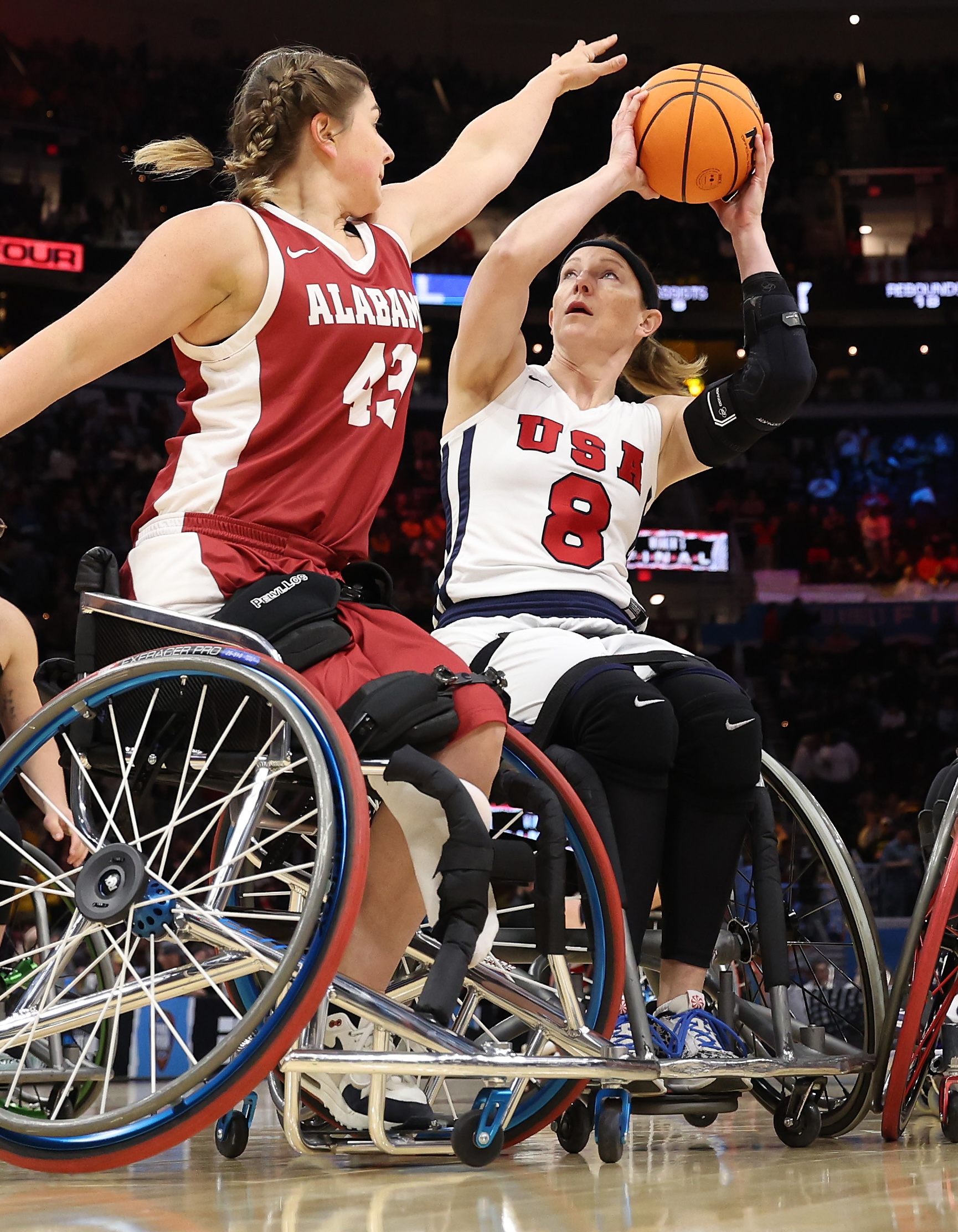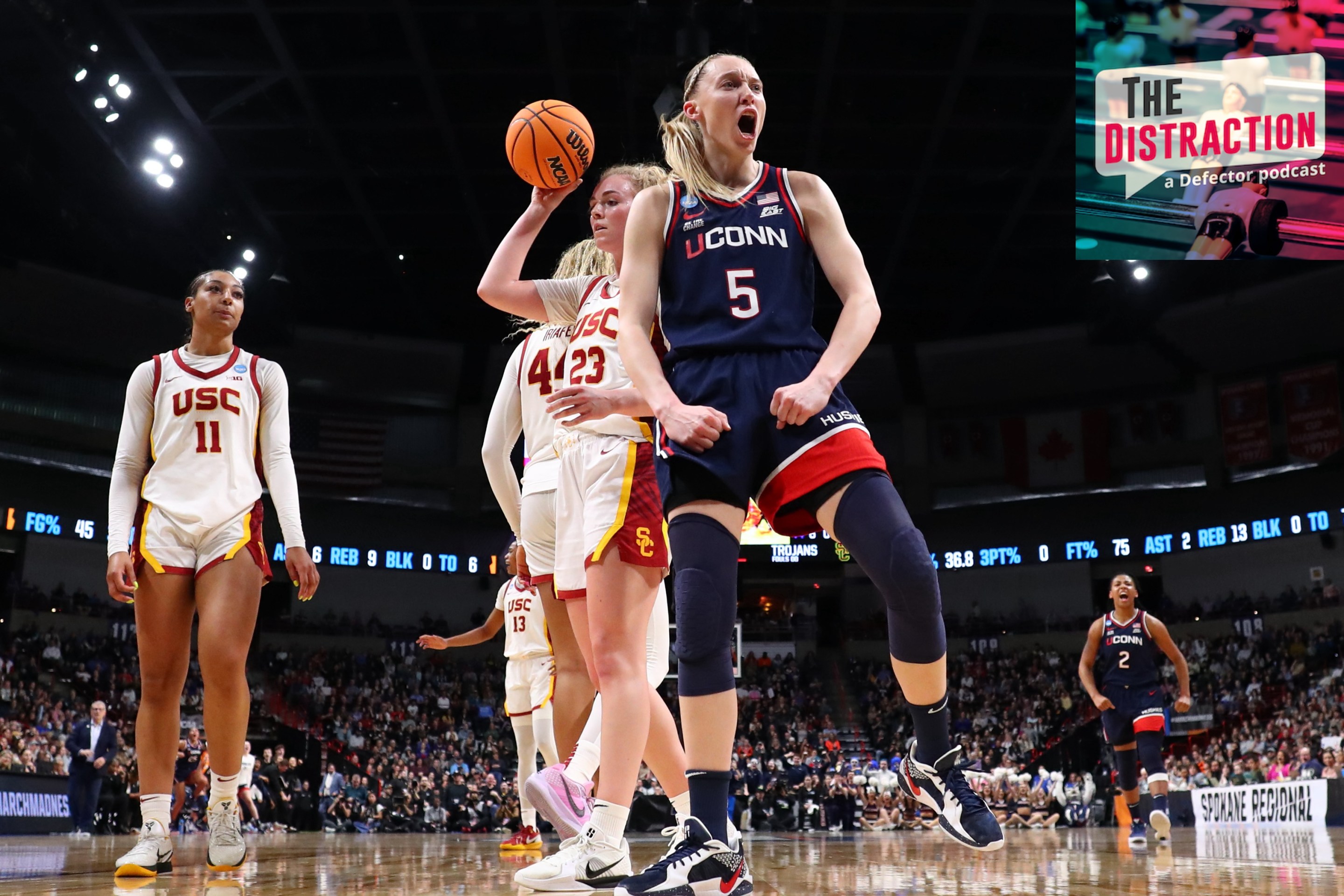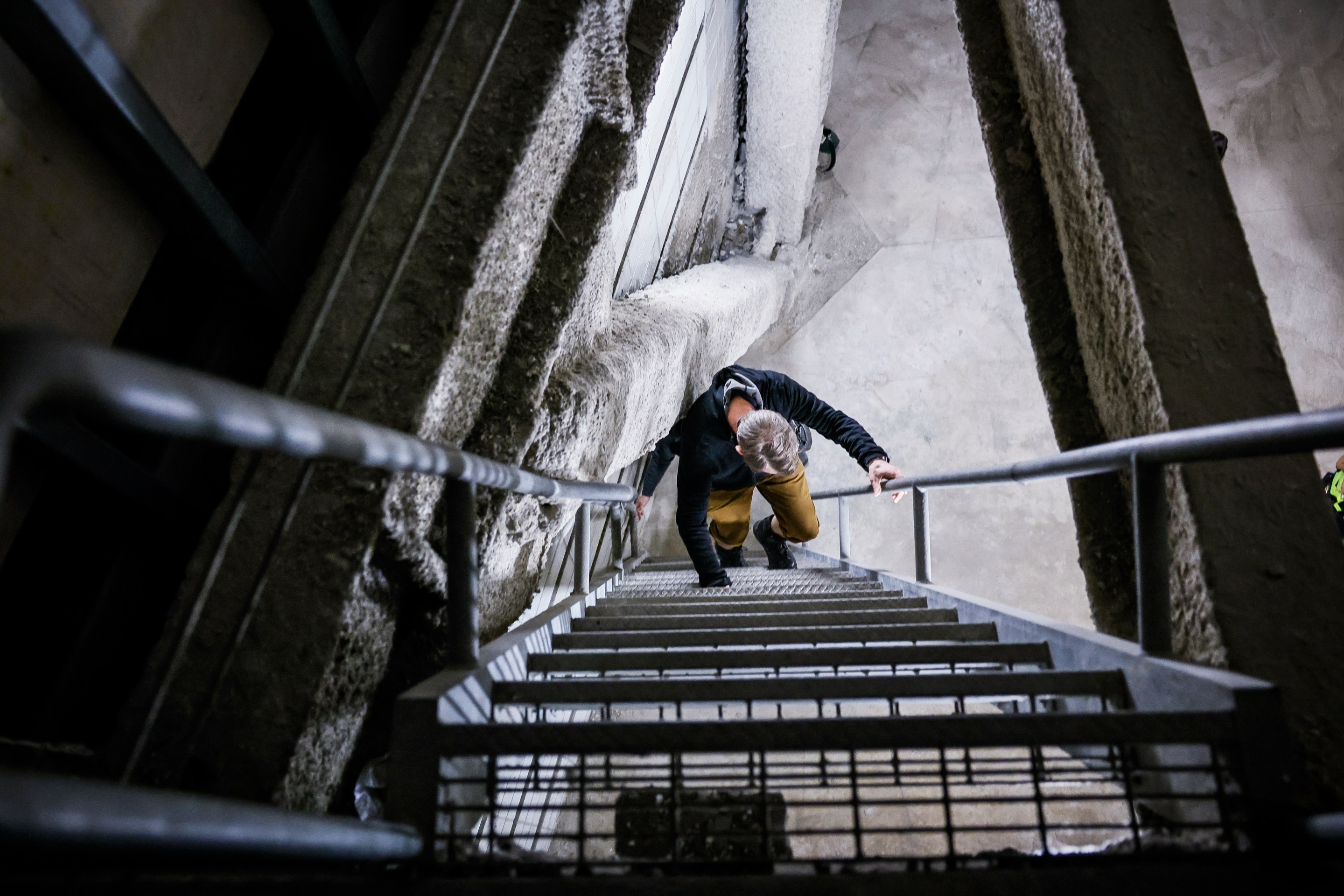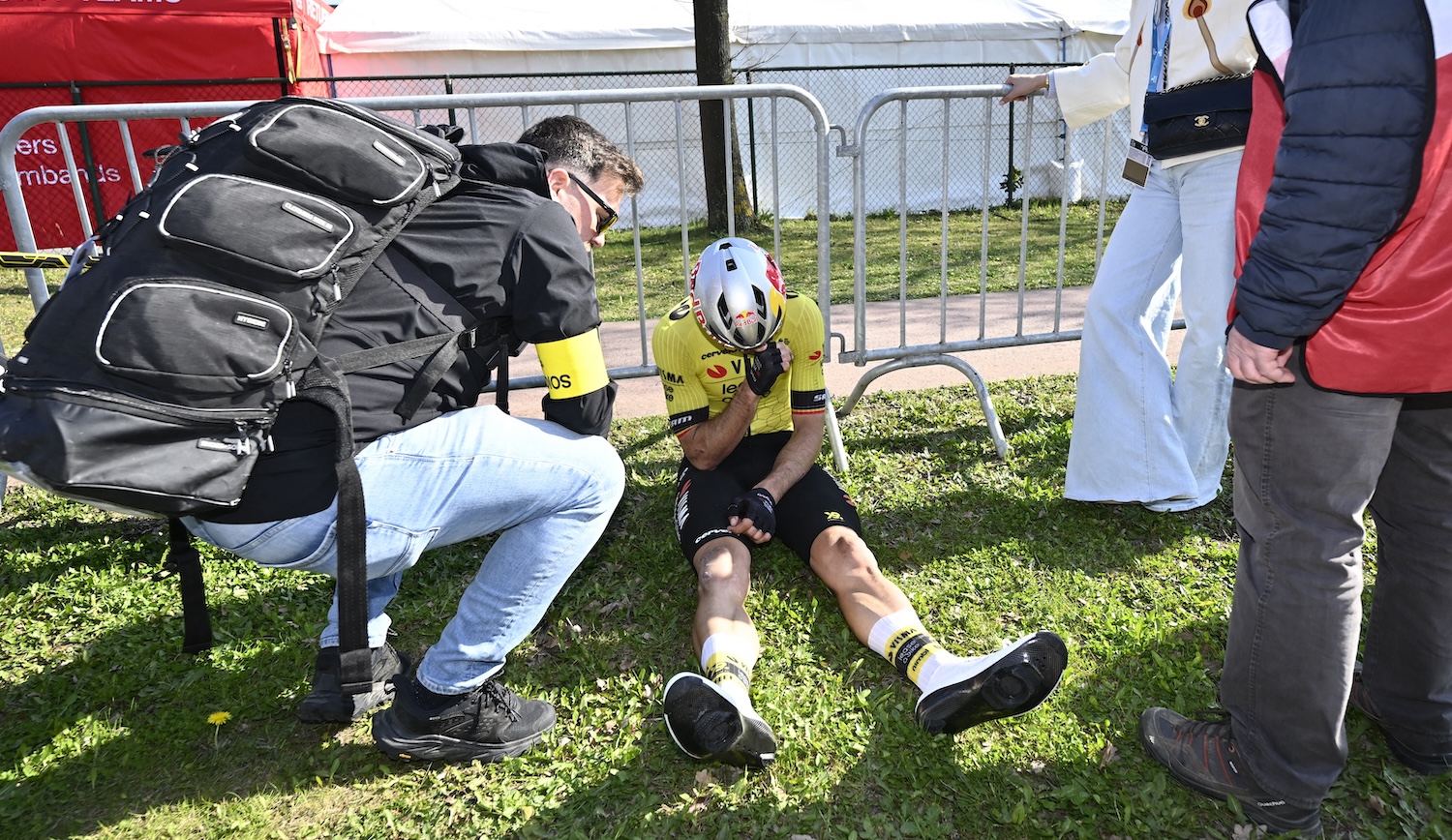Anything with the label of diversity, equity, or inclusion is under attack. Few arenas so closely tie DEI initiatives and athletics than parasports, for people with disabilities. From military-focused projects like the Invictus Games, to collegiate programs across the U.S., to the major funding disparities among international teams, the pursuits and careers of disabled athletes are just as much sociology and history lessons as they are athletics.
In the current, deeply destructive political moment, how are things going? I spoke to leaders at collegiate parasport programs and got the sense that they are in a holding pattern, hoping—perhaps vainly—that their sports will be insulated, while also being aware that their athletes stand to be affected off the court as well.
Sports like wheelchair basketball at the collegiate level are in an odd position. There are (comparatively) few teams—17 competed in the most recent national championship tournament. Those teams run the gamut in terms of university size from Illinois to Southwest Minnesota State, a school with an enrollment under 9,000. Some programs have impressive facilities, with Alabama, another powerhouse, recently opening a $1.2 million facility dedicated to wheelchair tennis. Others scrape by with minuscule budgets compared to their stand-up—community slang for sports that require running—counterparts.
From an administrative point of view, these programs are run in a variety of ways. A couple sit under their university’s athletic departments, but most are either part of their school’s disability resource office—the same office that oversees students’ classroom and living accommodations—or they are under the umbrella of their school’s campus recreation department. Notably, the sports aren’t under the umbrella of the NCAA, meaning that they can follow different eligibility requirements and are not necessarily bound to legislation like Title IX.
Jim Glatch is the recently retired head coach of the wheelchair basketball program at Pennsylvania Western University, Edinboro, having led the program from 1995 to 2024. He estimates that the wheelchair basketball program, for which he was also head coach, is the third-most expensive athletic program at the school, following only football and wrestling. A huge part of that cost is transport—he estimates a single team bus trip bill in 2021 to have cost more than $12,000 including athletes and equipment; custom-fit wheelchairs don’t come cheap, or ship cheaply. Glatch says that he’s hearing “rumbles” about the scope of collegiate programs shrinking if DEI initiatives start taking bites out of their budgets.
“If I have 10 guys on my roster, I’m playing eight, I'm probably not going to be able to afford to bring in 11 through 15 anymore,” Glatch said. “So now, all of a sudden, we have kids out there who won't be able to get the opportunity, because I've got to be able to afford these 10 kids so that I have two full fives to run practice.”
That would likely have knock-on effects with the national program, where the vast majority of the athletes have been collegiate players. At the same time, another large driver of the sport’s growth in the U.S. has been international enrollment. Although scholarships, federal funding like social security, and academic scholarships make up the patchwork that allows athletes to play at the collegiate level, there has been a long line of international athletes—particularly from Canada, the U.K., and Australia—who have flocked to the U.S. collegiate system because of the high level of competition.
Glatch says that it’s hard to imagine the international talent pipeline will continue to flow as the U.S.’s geopolitical favorability continues to decline. He also sees smaller schools as the ones more likely to be affected.
“The first question is, are they still going to be able to afford it?” he asked. “The second question is, are these kids going to want to come? How much of an impact is the negativity going to have, from our current administration down here, on people actually wanting to come to the U.S. to go to school instead of staying home?”
Peter Hughes is the current director of Adaptive Athletics at the University of Arizona, one of the larger collegiate parasport programs in the country. He’s keeping an eye on the current situation, but it’s the prospect of state funds evaporating, rather than federal ones, that he’s most concerned about. For example, the University of Arizona has access to $160,000 per year through the state, and the majority of their money comes from outside philanthropic donors.
Hughes said the federal targeting of DEI initiatives hasn’t yet been deployed at the state level. “If these same [federal] arguments move into the state, I could see them dropping some of our funding,” he said. “That is fairly significant [and] would definitely make it more difficult. … I don't think our programming is in any imminent danger right now.”
One immediate concern is how athletes are affected off the court, with opportunities such as a recently scheduled recreational event at Saguaro National Park that Hughes believes was canceled due to NPS cuts. Hughes is also worried about his athletes’ opportunities in other programs that serve them; many parasport athletes are marginalized in multiple ways, whether that’s due to their race, sex, or gender.
Some schools like the University of Texas at Arlington—the Movin’ Mavs, if you’re into adapted team names—seem to be holding strong. Morgan Wood, who leads the university’s women’s wheelchair basketball team, says she’s yet to see the effects of the Trump purges as university leadership attempts to insulate its programs from defunding.
“We have had a longstanding budget over 30 years which has not been a conversation of changing due to DEI being barred,” Wood said. “For now, we remain unaffected. At UTA, we are fortunate to have a [university] president and vice president who are more than equipped to serve our diverse population. … We know we have their support.”
Glatch says that if parasport funding does get reduced, it’s going to take hard work from a younger crop of coaches to make ends meet. “The game is becoming a little younger, guys like me are retiring,” he said. “Being innovative with your fundraising in advance and building up a reserve, as much as your university will let you, is important.”
He sees the growth of collegiate summer camps, longtime staples on the scene, as well as growth in sponsorships, as two potential avenues for university programs to focus on if direct funding dries up.
Parasport programs currently operate with the thinnest of margins; there’s already not nearly enough money to go around. In a climate where disability-focused services are under attack, where the Department of Education is in the process of being dismantled, and where legislation like Section 504—which guarantees equal access to education at publicly funded universities for those with disabilities—is being picked apart, it’s no wonder that parasport programs are feeling the pressure.
“They're concerned about it. We don't know where it's going.” Hughes said. “I guess I'm one of those guys that thinks, any way you wrap it up, that diversity, equity and inclusion are all good things. I don't know how we got into this conversation [of it as] a bad word.”






